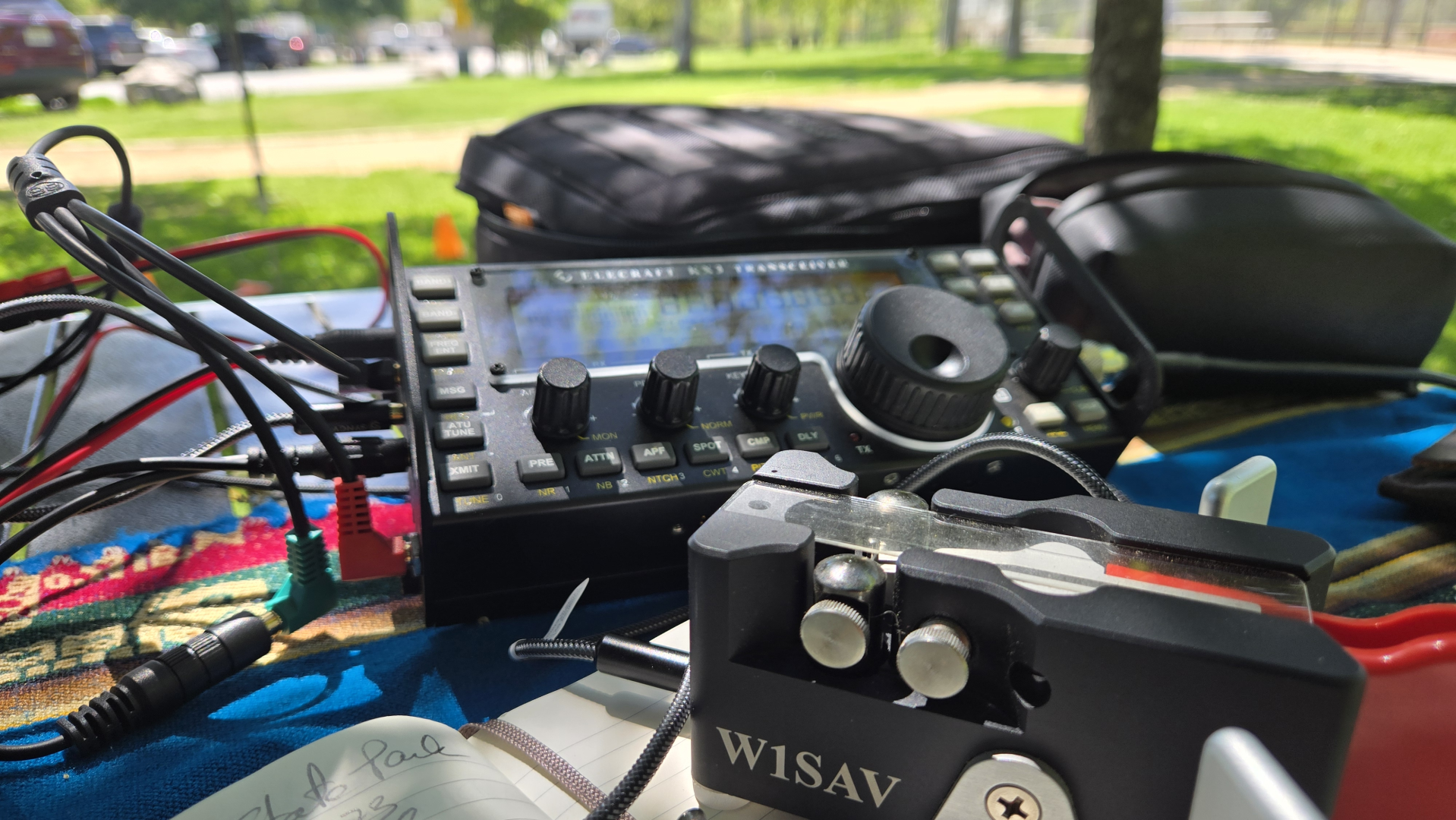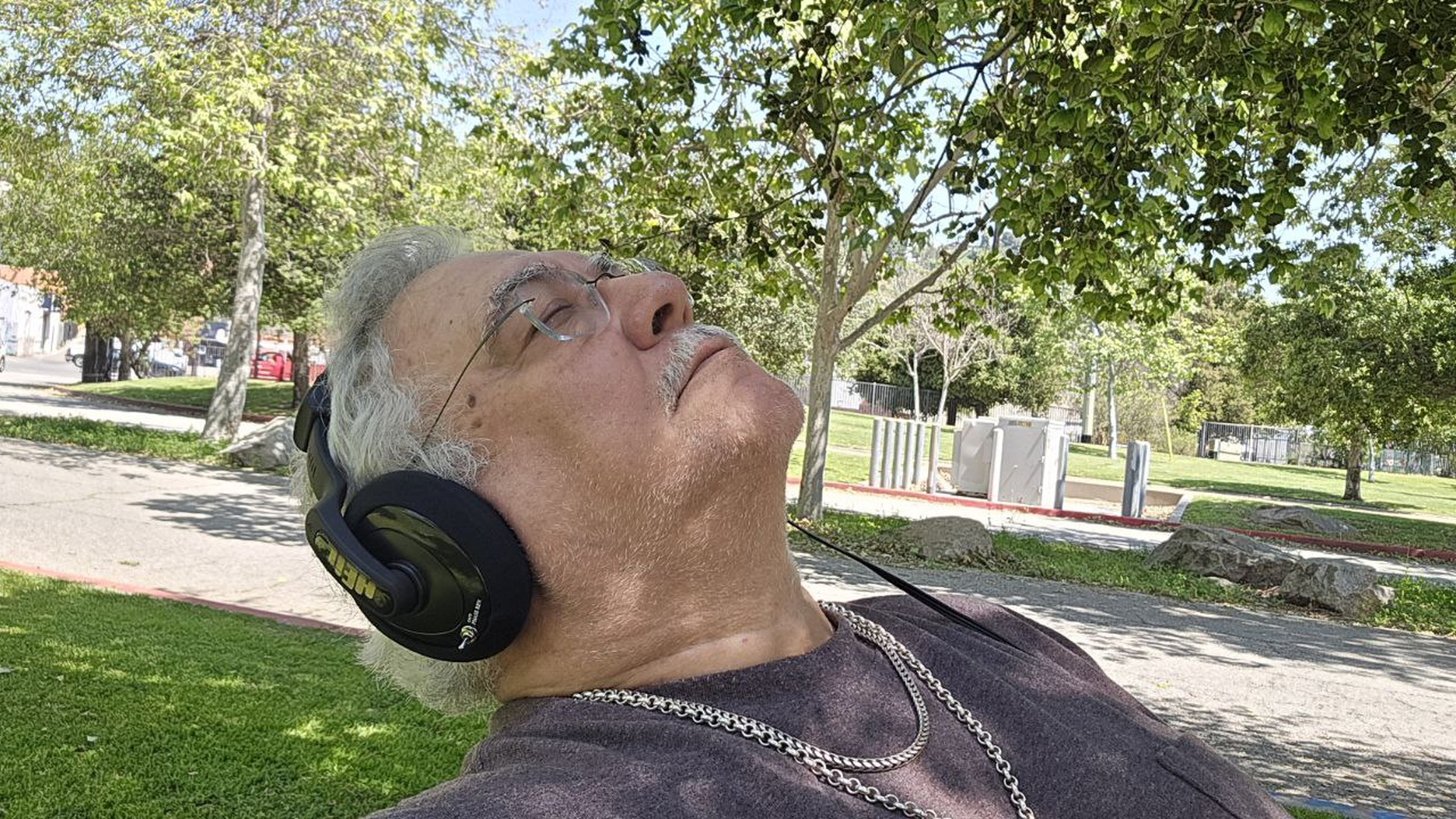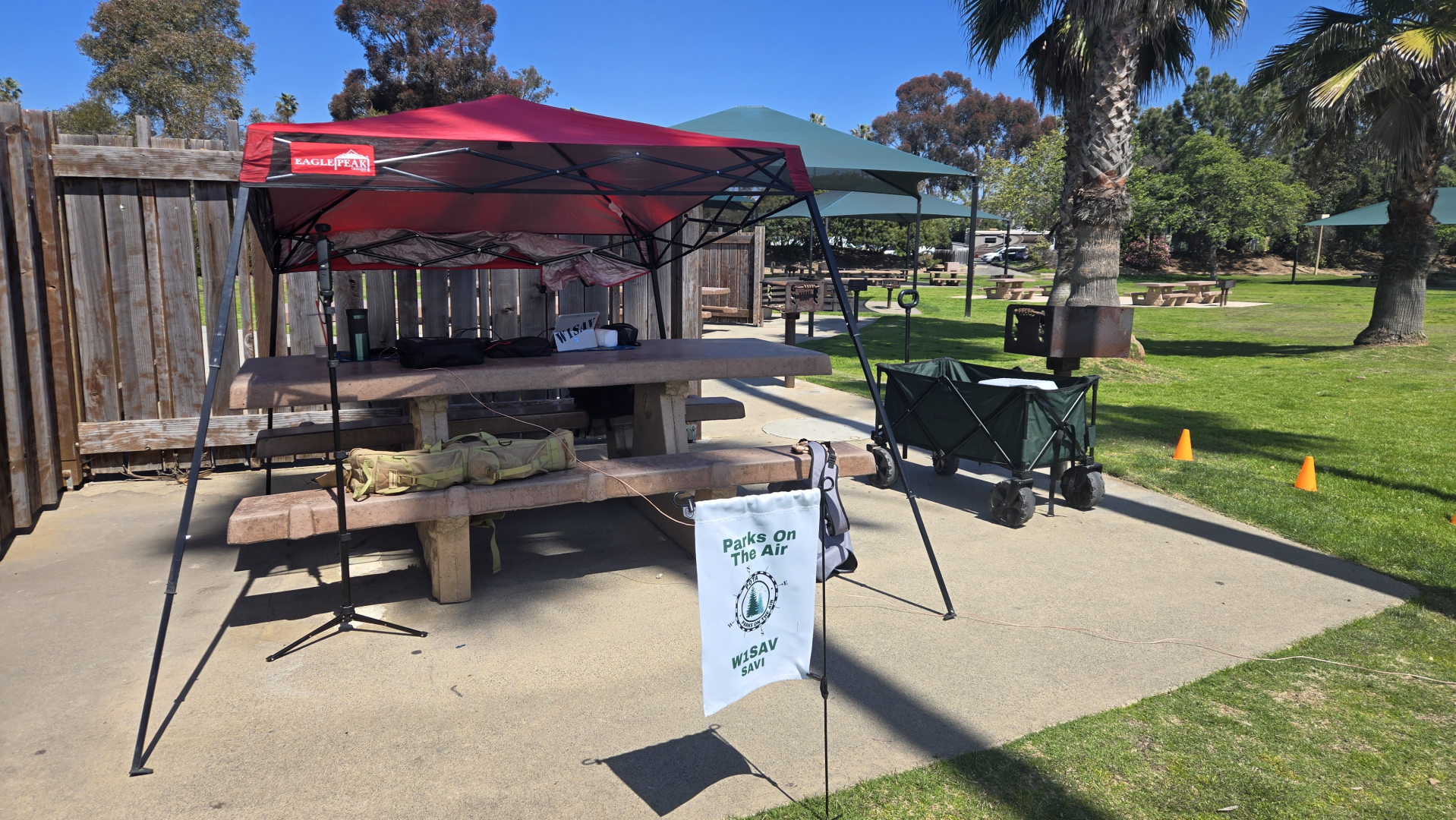Activated on December 10th, 2024

I woke up around 0630 without an alarm. Evidently this seems my normal for now after I killed all my alarms. As I normally do after I get up, I went into my shack to start hunting some POTA. As I sat there with no contacts, I kept wondering if I was too early. It seems, over the last few weeks, that my hunting paid off a little later in the day. “Alas!”, says I, activate a little later. On the spot I decided to make a “quick” activation.
I packed my backpack, got my coffee mug, and off I went to my car, now headed to Albert’s for a breakfast burrito. As I broke fast I contemplated the weather at the park. The weather app showed temps in the low 60s. This led me to reconsider how I was going to rearrange the setup in my car. Once done at Albert’s it was but a 20-minute drive to the park. The next thing I knew, I was setting up my antenna.
I used the same antenna setup as I did for the last activation. I used my drive-on support, my 30-foot mast, and my CH LEFS, the lightweight end-fed sloper with the 63-foot wire. Out went my orange cones after the antenna. By this time, I was without my sweatshirt because it was a lot warmer than the weather app said.
The inside of the car was arranged differently than last time. Although I still felt as though I was in a Gemini capsule, it was much easier to get in and out of the car. I even had my camera on a tripod on the floorboard of the rear passenger seat. The issues with the camera connection to my cell phone were not there, although I did do a software upgrade.

The weather was beautiful for an activation. It was pretty much a cloudless sky with barely a breeze. Inside the car I was getting impatient, as I tried 15 meters for a first contact with no joy. I then went to 15-meters without results. That was when I decided to start hunting POTA from the park. Since my logging program is CAT controlling the radio, it is easy to hunt POTA because I am picking up the activators’ park and frequency from the POTA spotting page. My first contact WA0WWW at park US-3252.
I do this at home, and I am quite familiar with the workflow. Well, ahem, not so much in the portable sense. For instance, I have dual monitors and on the large one I have the POTA spotting page up. On my laptop’s screen I have my logging program, so all I need to do is look up from one screen to the other for the information I need. Not so much with the Surface Go with its single screen where I have to switch between aps. By the way, that screen has about 75% of the real estate of my laptop. The bottom line is that I was an uncoordinated mess. This is the experimenting side of hams. You go out and try something and decide if it works. If it doesn’t, change something and try again. This was the case in how I set up the inside of the car as it worked so much better for me. As for the workflow, well, I gotta work on that.

I kept hunting for the next 40 minutes with no success. It’s similar to the results I’ve gotten in the shack lately. So, I decided to call CQ instead. In about five minutes’ time, I got my first hunter. I was actually about to call it quits when he came in. Then there was a seven-minute span before the second I made the second contact. By now I had been active for an hour. That’s one contact every twenty minutes! I kept looking at my watch checking on the time because it just seemed it was a long time activating. I contemplated going QRT after each of the next eight contacts. I guess my sense of time got skewed somehow. I did not whoop and holler when I got ten contacts. Instead, I just wanted one safety so I could QRT. Eventually, I got that eleventh contact and promptly QRT-ed.
This was certainly a weird activation for me. It took me one hour and twenty-five minutes to activate. However, the last ten contacts only took 26 minutes, and that averages just over two minutes and twenty seconds per contact! So, I did much better when activating than hunting. In the end, all contacts were done on the 20-meter band, which, by the way, was shown as a hot band by the DX Heat spotting site.

Draw a north-south line crossing the southernmost tip of Texas, and you’ll find that almost all of my contacts are east of that line. What was interesting to me this time, was the fact that all of my contacts for this activation were located in the western states. Well, technically, Alaska is both our easternmost and westernmost state at the same time! But, you know what I mean.
As I was packing up the antenna, I got into a conversation with Luis who works as a community coordinator for the state park. We spoke at length about the community use of the park and how the upcoming improvements will foster much more community use. It truly is a park for the community. As I was explaining my hobby to Luis, we spoke to a compliance monitor for the City of Los Angeles. Tanya was quite helpful in filling in some details about the park improvements. The bottom line is that the construction will continue for about another year. The contract is for 456 days of renovation, with schedule slippage for extenuating circumstances. There was a delay because the Least Bell’s Vireo, birds living in the wildlife habitat, did not make their migration as expected.

Yes, this park has two sides managed by state and city governments. And the city government, my friends, is why the park was closed on Veterans’ Day, a major holiday in the U.S.
Ciao for niao…
Activation Statistics
| Location | DMvc13, 34.09834, -118.23475 |
| Activation Attempt | 81 |
| Date | 10 December, 2024 |
| Park | US-3548 Rio de Los Angeles State Park |
| Park Activated? | Yes |
| Previous Attempts | 20 |
| Park to Park Contacts | 1 |
| Number of Contacts | 11 |
| DX Contacts | 1 – Alaska |
| Historical Contacts | 261 |
| Mode | CW |
| Radio | Elecraft KX3 |
| Antenna | Chameleon Light End Fed Sloper (LEFS) |
| Tuner | Internal |
| Power | 5W using a 3Ah Bioenno battery |



Leave a Reply